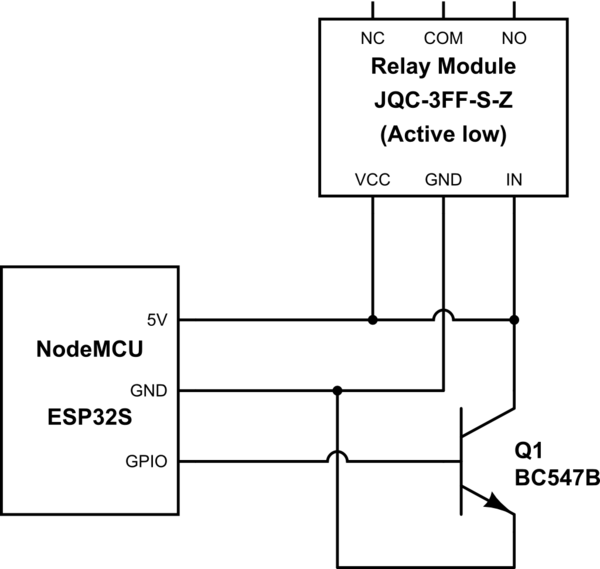I have the following circuit:

simulate this circuit – Schematic created using CircuitLab
When I digitalWrite(HIGH) the GPIO pin, the transistor closes and thus the relay's input is grounded, causing it to switch.
However on digitalWrite(LOW), the transistor opens, so the IN pin is floating, yet the relay switches.
I thought the operation was working on strokes of luck. But when I connect 5 V to pull it up like this, it won't switch when I make the GPIO pin high. I thought the connection to ground would cause it to be pulled down.

(The module looks like the one shown in this question.)

